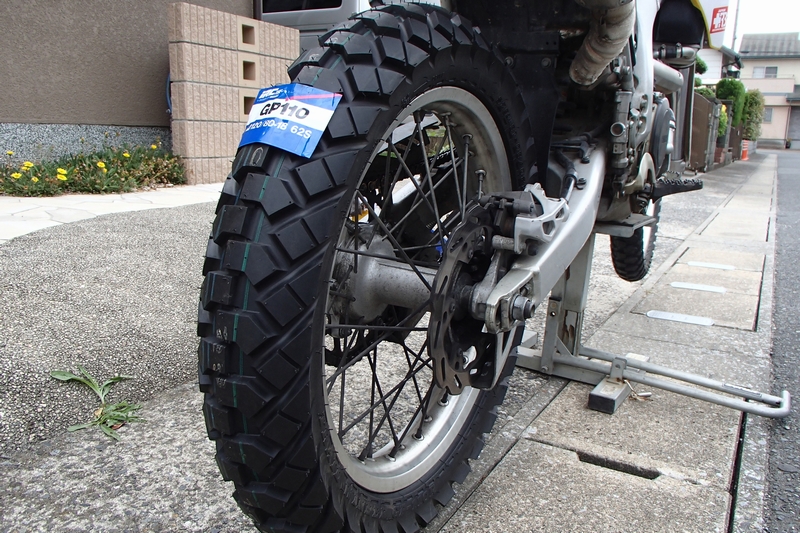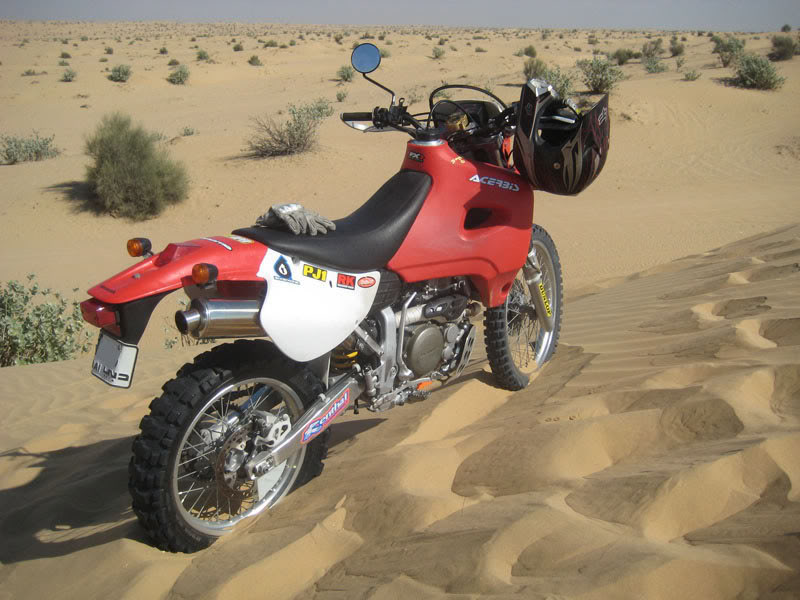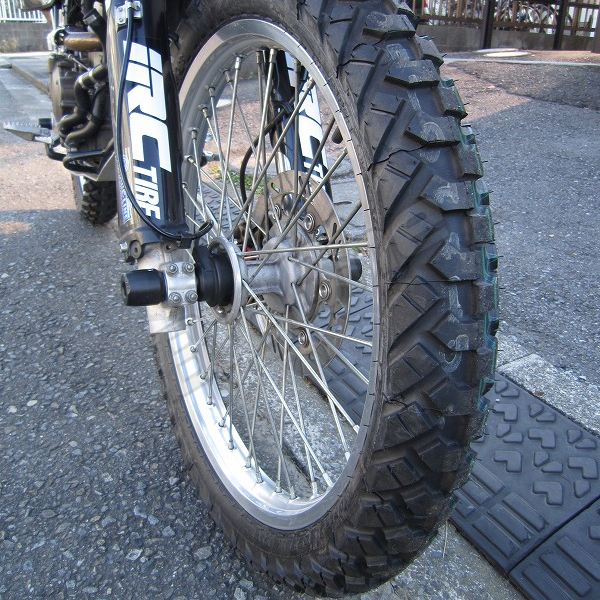Introducing the IRC GP 110: A Personal Experience
Today, I’m taking a moment to share my experience with the IRC GP 110, a tire that found its way to my motorcycle as I awaited a replacement for the Mefo Explorer. If you’re familiar with my previous content, you might recall a few videos and updates regarding the Mefo Explorer. However, with a series of planned trips on the horizon, the IRC GP 110 emerged as a handy substitute.
A Tire’s Tale Across Varying Terrains
The IRC GP 110 has witnessed over four thousand miles beneath it. This journey began with a KLR 650 loaded with luggage as I embarked on a trip spanning multiple regions. Starting from Central Oregon, the tire’s durability was tested across terrains leading up to the Squamish area in British Columbia. From there, it was an exhilarating ride down to the contrasting terrains of Death Valley, followed by a journey through the heart of California, culminating back in Central Oregon.
The tire’s adaptability further shone as it carried me from Central Oregon to Chico and back, with several smaller adventures interspersed in between.
On-Road vs. Off-Road: A Balance of Adventures
Interestingly, this tire’s journey was divided into approximately 40% off-road and 60% on-road terrains. Generally, my preference leans more towards off-roading, with a typical division being the inverse: about 40% on-road and 60% off-road. However, certain longer stretches during this particular journey demanded more on-road travel, especially when time was of the essence. If you’ve chanced upon my ‘Rattlesnake’ video series or my ‘Death Ballad’ videos, you’ll gain a deeper insight into these travels. These series offer a firsthand look into the challenges and exhilarations I encountered, particularly as I ventured close to the winter season.
A Unique Tread Design
One of the standout features of the IRC GP 110 is its intriguing tread design. A closer look reveals a continuous tread running down the tire’s center, characterized by overlapping lugs. This design isn’t just aesthetically appealing but speaks volumes about the tire’s grip and performance on varied terrains.
Throughout its journey, from the serene landscapes of British Columbia to the arid expanses of Death Valley, the IRC GP 110 has stood the test of time and terrain, a testament to its build quality and design. Whether you’re an on-road enthusiast or an off-road adventurer, this tire promises a ride to remember.
The IRC GP 110: A Deep Dive into its Features
The motorcycle tire market is diverse, with a plethora of options for riders of all tastes and preferences. Today, we shift our focus to the IRC GP 110, a tire that boasts of certain distinguishing characteristics.

Optimal Pressure for Smooth Rolling
One of the IRC GP 110’s defining features is its almost continuous tread down the center. When inflated to the right pressure, this tire provides a seamless and easy roll, offering an enjoyable and smooth ride. This central tread is a notable point of discussion, especially when compared to the center tread stripes found in models like the Heidenau K60.
For riders who might not be fans of the latter, the GP 110’s design could be a delightful alternative.
Off-Road Performance and Side Lugs
Moving away from the center, the GP 110’s side lugs are designed at an approximate angle of 45 degrees. Observing the dirt wear line provides insights into the tire’s off-road capabilities. For riders who often travel with luggage, the importance of good side contact during corners cannot be stressed enough. The KLR’s corner side contact with the GP 110 is commendable. However, as one moves further to the side, the gaps between the lugs become more prominent, leading to a noticeable increase in road noise.
Road Noise and Comparison
While some stress is evident in the GP 110’s design, it’s worth noting that these signs of wear are considerably milder than what one might observe in models like the Mefo. The GP 110 shines when it comes to reducing road noise, especially while riding straight. The tire’s continuous center tread plays a significant role in this. But, as with many tires, a slight howl emerges as you lean into turns. When pitted against competitors like the Dunlop 606 or the Pirelli MT 21 Rallycross, the GP 110 stands its ground. The latter models, despite their merits, tend to produce a louder howl due to the larger gaps between their primary lugs.
Unveiling the Nuances of the IRC GP 110
The 90-10 Paradigm
The IRC GP 110 tire is described as a 90-10, indicating its suitability for 90% on-road and 10% off-road usage. At a first glance, this categorization seems a tad perplexing. Typically, a tire with a 90-10 designation would lean more towards the characteristics of a street tire. However, the IRC GP 110 breaks the mold, featuring pronounced lugs not usually found on tires with this classification. Despite its unique structure, the tire boasts a rounded carcass design, ensuring agility and ease when it comes to cornering.
Versatile Performance Across Weather Conditions
If you’re familiar with the series where this tire was put to the test, you’d know that it was subjected to a diverse array of climatic conditions. From the scorching heat of Death Valley to icy and treacherous paths, this tire performed reliably. Rain, snow, or sunshine, the IRC GP 110 demonstrated commendable adaptability, ensuring a safe and comfortable ride regardless of the challenges thrown its way.
Lifespan and Durability
Originally, my expectations for this tire’s longevity were modest, anticipating a life of around 3,000 miles based on recommendations. However, the IRC GP 110 pleasantly surprised, clocking in over 4,000 miles and still showing potential for more on-road journeys. That said, one might notice a decline in its off-road prowess over time. Although lowering the air pressure could potentially improve grip, it still doesn’t quite match the performance of flatter profile tires like the MT 21s. Yet, considering its overall performance, the tire has left quite an impression.
A Balanced Act: On-road and Off-road
For riders who treat their KLRs as versatile 50/50 machines, this tire is a worthy companion. Whether commuting or embarking on an off-road adventure, the IRC GP 110 delivers. Its rubber composition offers commendable traction, and its dual-character proves efficient both on and off the road. And, while some might be perturbed by tire noise, using ear protection efficiently negates this minor inconvenience. Occasionally, there might be instances of unusual vibrations, but these tend to dissipate swiftly, especially when cruising down highways.
Initial Impressions of the IRC GP 110
Upon clocking the first hundred miles on the IRC GP 110, I noticed some peculiar vibrations. However, to my relief, these soon disappeared, leaving behind a smooth riding experience. Focusing on the front tire, the tread design echoes that of the rear – almost identical in its formation. With an overlapping center, it offers a consistent and steady contact during straight runs. The real distinction emerges as you lean into turns, where the side contacts become apparent. Interestingly, the marks from on-road turns align quite closely with those from off-road terrains, indicating a balanced wear pattern.
Considering the tread depth still in place, I’m planning to stick with this tire on the front for the foreseeable future.
Who is the IRC GP 110 For?
With a name like “IRC GP 110,” one might wonder who this tire caters to.
In light of the upcoming fire season – which, unfortunately, I won’t be participating in due to a knee issue – this tire emerges as a potential favorite for those seeking a balance between on-road and off-road adventures.
Tackling Diverse Terrains
Similar to many 50-50 tires, the IRC GP 110 faces challenges when pitted against the deep, soft sands prevalent in Central Oregon. Recent rainfall, followed by rapid drying, has intensified the sandy texture, particularly in cornering scenarios. However, a distinct advantage of this tire is its soft carcass. To elucidate, I’ve captured an image that highlights the flexibility of the tire’s carcass when off the bike. This flexibility translates to better performance when the tire is aired down, say, to pressures around 25 or even 20. While this does improve traction, riders may still find the tire tending to wander on deeper gravel paths, especially on some of Central Oregon’s roads leading to the mountains. These pathways, freshly laden with gravel, haven’t yet experienced the traffic required to compact and stabilize the surface, posing a mild challenge for the tire.
Challenges of the 50/50 Tire
In the world of motorcycle tires, the balance between on-road and off-road performance is a persistent challenge. Currently, the road conditions I’ve encountered are rather washy, causing noticeable twitching in the handlebars. Such conditions test the mettle of any 50/50 tire. Deep sand and mud pose additional hurdles. The inherently rounded nature of these tires means that traversing slippery terrains often demands added caution. One might need to either weight the front tire adequately or simply reduce speed for optimal control.
Compromises and Performance
It’s essential to understand that every 50/50 tire entails certain compromises. The real question boils down to this: What trade-offs are you willing to accept? If you’re scouting for a tire that offers proficient cornering and side grip in dirt terrains, the one I’ve tested might just be up your alley. I found its performance in these conditions to be commendable, and it managed to strike a good balance between on-road and off-road demands.
Conclusion
While no tire is perfect, understanding and anticipating its limitations can significantly enhance your riding experience. For those willing to work with the necessary trade-offs of a 50/50 tire, the rewards in terms of performance and versatility can be plentiful. Personally, after my experience with it, I’d certainly consider looking into these tires for future ventures.





